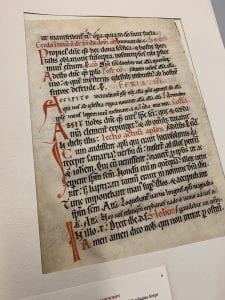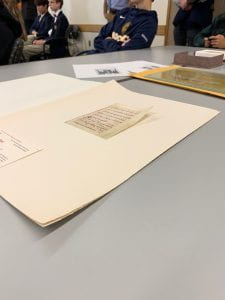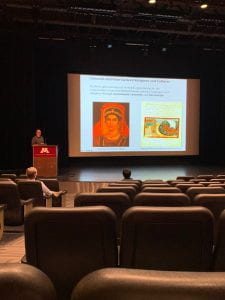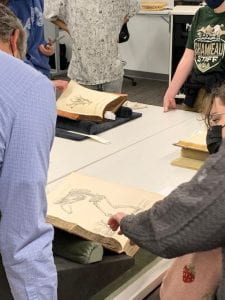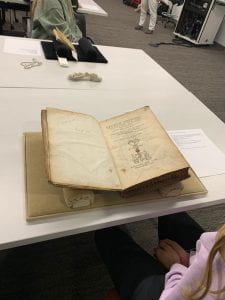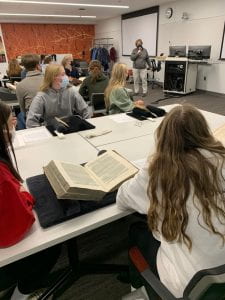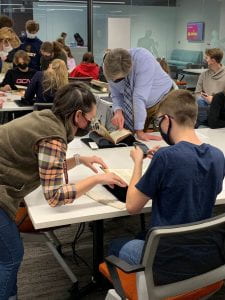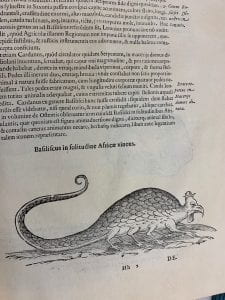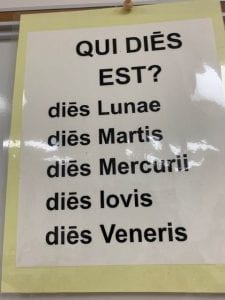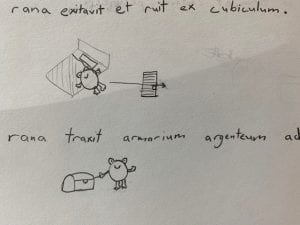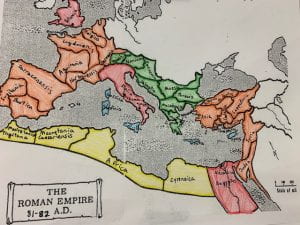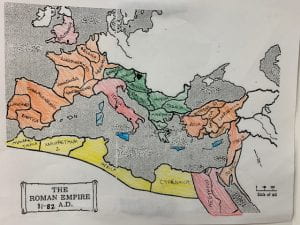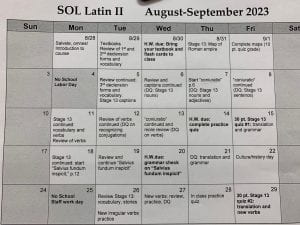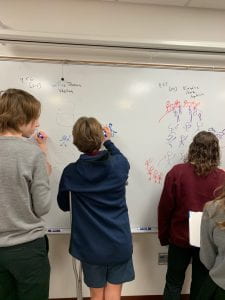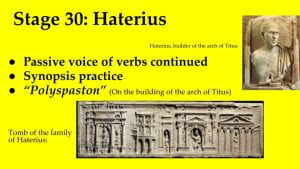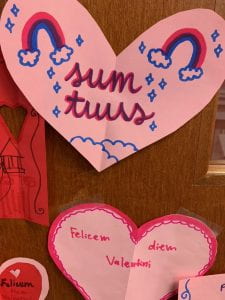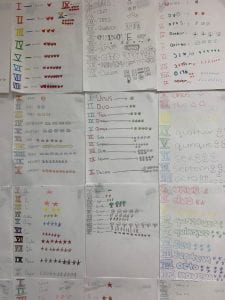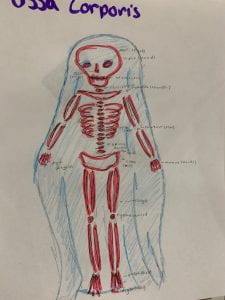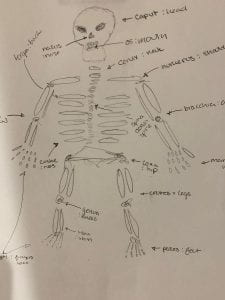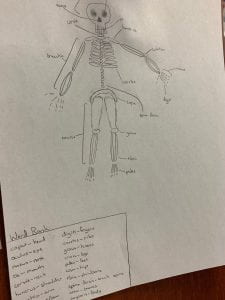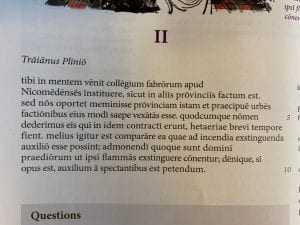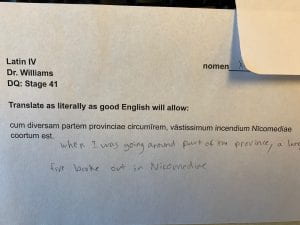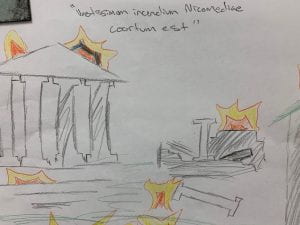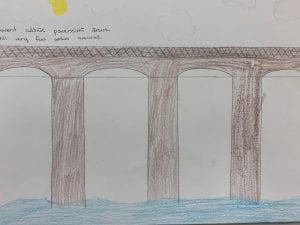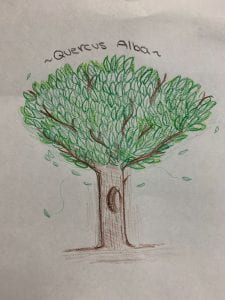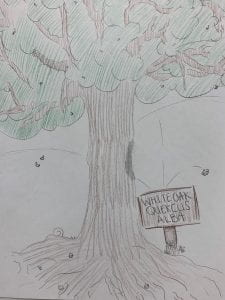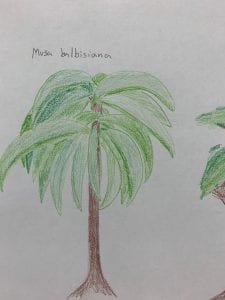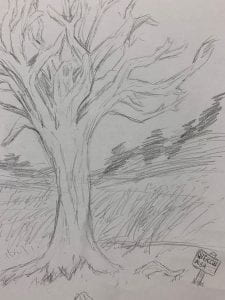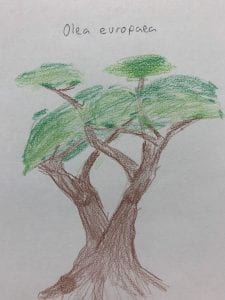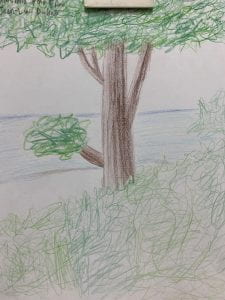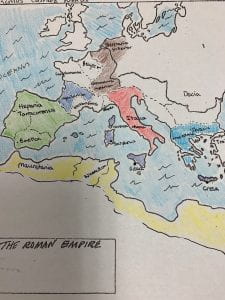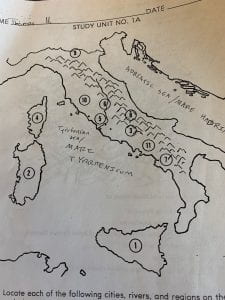Field Day. 10/26/22 CIS Students had a wonderful day at the University of Minnesota!
Schools who came to the CIS Field Day organized by College in the Schools and the Department of Classical and Near Eastern Religions and Cultures: Providence Academy, Parnassus Preparatory School, Eagle Ridge Academy with Nova Classical Academy, St. Paul Central High School. Along the way, the Nova group came across 3 of our PSEO students and a recent Nova grad attending the U, who all were glad to visit with us.
9:15 – 9:30: Walk across the river to Andersen Library (https://www.lib.umn.edu/spaces/andersen), then 9:30 – 10:30: Special Collections Manuscript and Papyri Presentation with Tim Johnson: Tim put out some artifacts on tables for students to see: a cuneiform tablet, a page from a medieval manuscript and some pieces of papyrus preserved between glass sheets. Students asked great questions about the source of the materials, problems inherent in archiving such a huge amount of stuff. We were amazed at how quickly the vellum manuscripts were starting to curl in the warm room.
Tim is an archivist who recently put together the Minnesota History Museum’s new exhibit on Sherlock Holmes. The largest collection of materials related to Sherlock Holmes is at the University of Minnesota. The Anderson Library has billions of artifacts stored in two huge caverns underneath the library: from Sumerian Cuneiform tablets to the largest collection of children’s literature, the YMCA collection (“Want to know how basketball was invented—it was at a YMCA”) which the university archives but does not own.
10:40 – 11:00: Presentation by Spencer Cole (Director of Undergraduate Studies) on departmental majors and programs: Spencer Cole talked about the range of studies and paths for majors and minor in the Department of Classical and Near Eastern Religions and Cultures. He had two images on his opening screen: A portrait of a woman named Isadora from Roman Egypt showing a woman, whose Greek name means “gift to Isis”, with Roman style hair and painted in Egypt on a panel of a mummy case. The other image was the oldest manuscript of Vergil’s Aeneid, Aeneas sailing off leaving Dido in her Greek-style temple in Carthage.
Spencer highlighted a current introductory Greek course given by a new member of the department, Simone Oppen whose research in the material culture of Corinth is shared in her beginning Greek course. He also told the students that there are all sorts of interesting courses offered. One current student has a double major in Latin and Art History (and was a CIS student from St. Paul Central). Another student is majoring in Neuroscience and minoring in Classics.
11:00 – 11:20: Presentation by our host Charley about Classical Architectural elements at UMN East Bank: An overview of the orders, Doric, Ionic, Corinthian and examples on campus started with a view of a temple at Aphaia on the Greek island of Aegina dating to about 500 BCE. Charley discussed the temple, the fact that the statues on the pediment all appear to be smiling or at least content as they are in the stance of fighting a war, with Athena standing in the middle. Charley introduced the students to the terms triglyph (the three horizontal bar decorations above the columns) and metope, the spaces between the triglyphs. Then we toured the campus to see some Doric and Ionic columns and took a group photo before lunch.
1-1:50 Wangensteen Historical Library visit: Their current exhibit was about medical aspects of some comic books stories. Students also got to see and turn the pages of some amazingly rare and expensive Renaissance books: early printing in Latin and Greek. This visit was a big hit!
We spent the last hour at the Weisman Art Museum.

